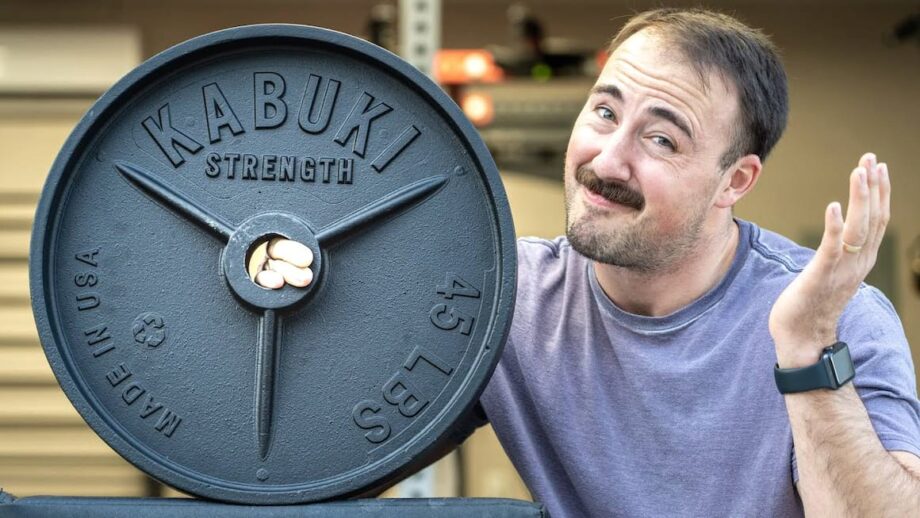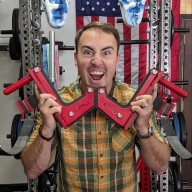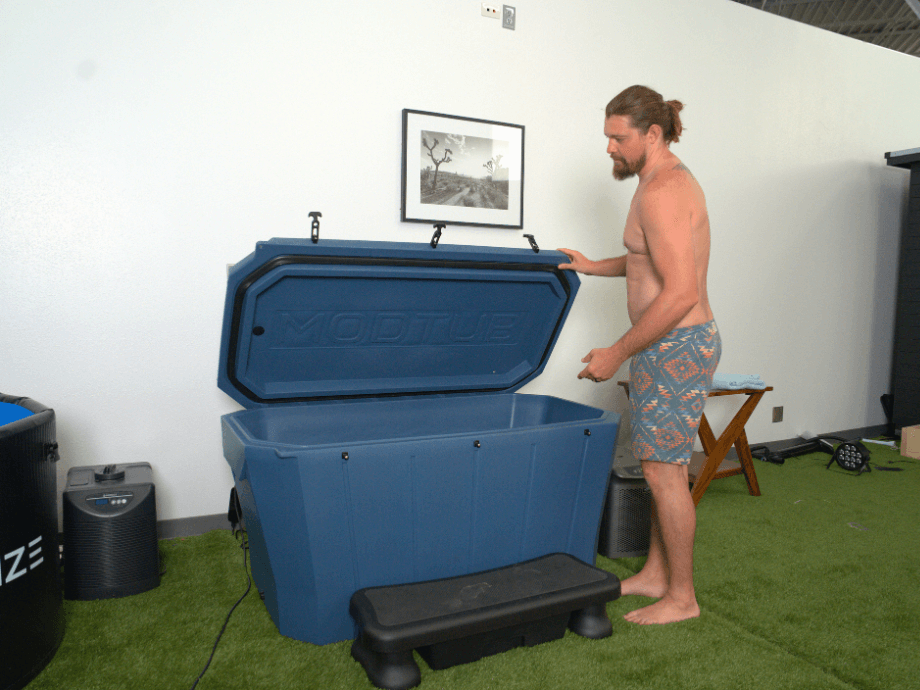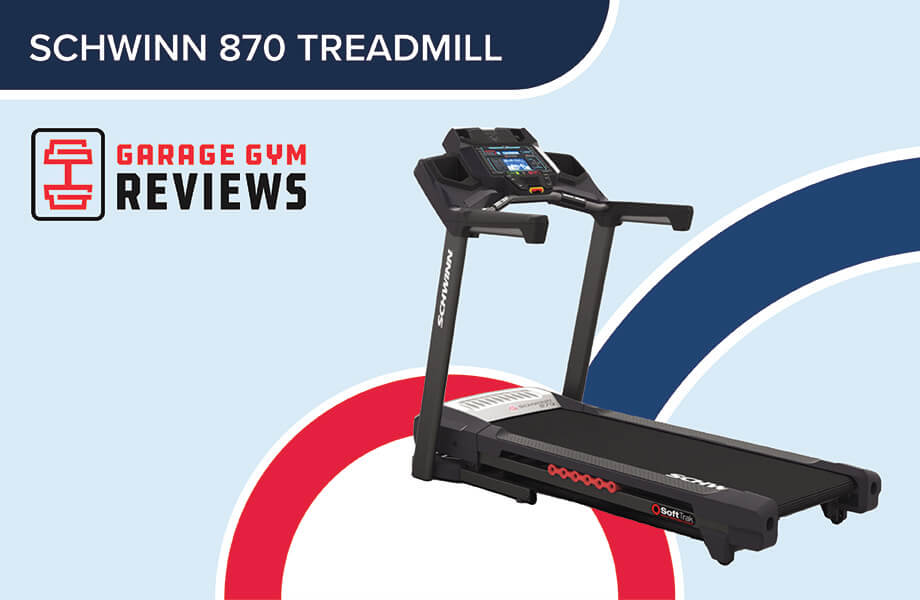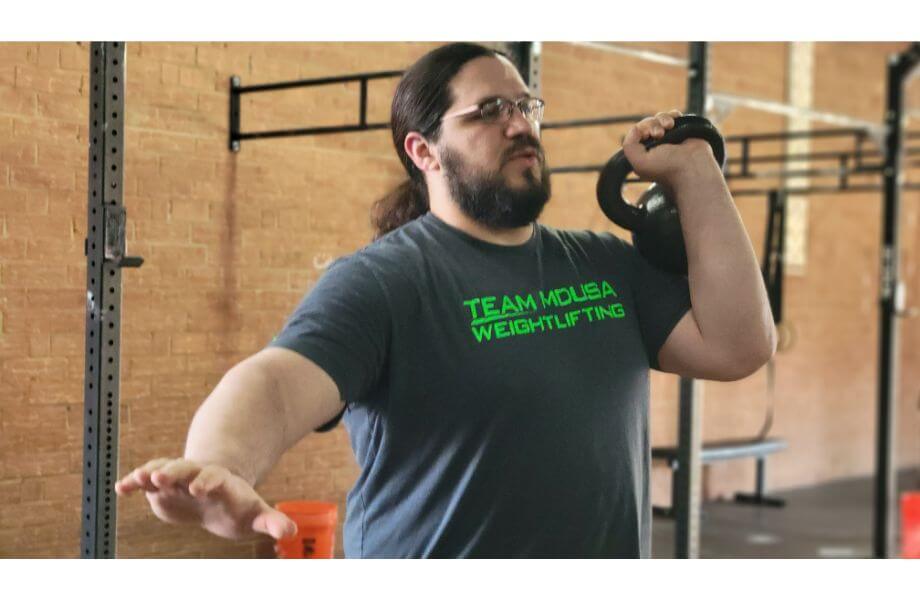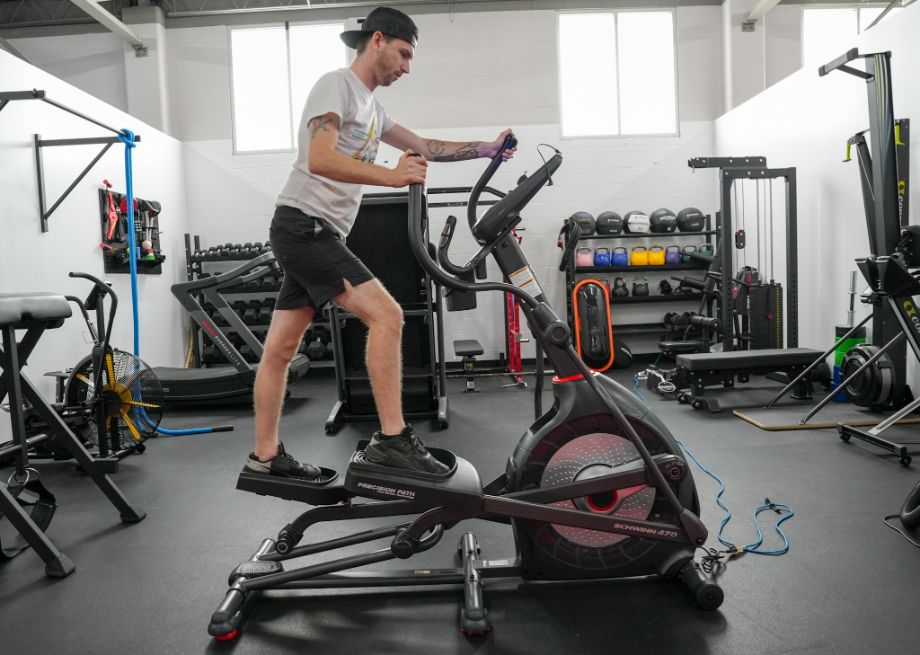Garage Gym Reviews staff writer, Amanda Capritto, is a certified personal trainer and CrossFit L-1 coach. She sat down with me to discuss common mistakes people make while lifting weights.
Hey everyone—Coop here from Garage Gym Reviews. As more and more people start working out at home, I’m hearing a common question:
“What are the biggest workout mistakes, and how do I avoid them if I’m working out at home?”
The thought of working out at home without a trainer or coach can feel daunting, especially for beginners and those who are working themselves up to bigger challenges, like learning Olympic lifting movements or advanced bodyweight moves like handstand push-ups.
I get it. I love my garage gym, but if there’s one downfall to home gyms, it’s that you can’t just tap someone on the shoulder and ask for a spot as you try a new bench press one-rep max. (That’s also why you should invest in some safety equipment, like power rack safety bars.)
Looking at the bigger picture, sometimes it can just be tough to motivate yourself to get out there. After all, you don’t have a coach or gym buddy to let down.
Realistically, most garage gym hurdles are easy to jump over if you have the right knowledge under your belt. That’s why I sat down with Amanda Capritto, our fitness writer who’s also a certified personal trainer, certified integrative nutrition coach, and CrossFit Level 1 instructor.
Together, we created this guide to help you recognize and fix the most common workout mistakes.
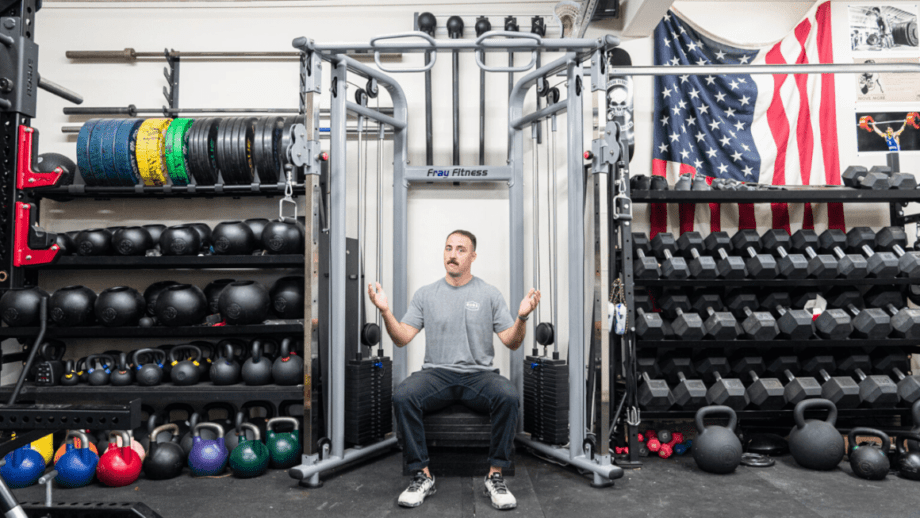
Workout Mistake #1: Not Taking Care of Your Body
Lifting weights should be about taking care of your body. Don’t neglect it in the pursuit of personal records.
Not Warming Up
Look, I hate warming up as much as the next guy. I’d rather just jump into a heavy set and save some time. But skipping your warmup is a recipe for sprains, strains, and tears. On top of preventing injuries, warming up improves your performance for that training session.No one’s saying you have to spend 30 minutes doing mobility exercises or 15 on the rowing erg. But, Amanda emphasizes, you should definitely get your blood flowing, loosen up any trouble areas (like tight ankles before squats), and prime the muscles you’re going to use in your workout.
Overtraining
A plague among fitness enthusiasts (especially bodybuilders and CrossFitters—Amanda says this as a former physique trainee and current CrossFitter), is overtraining . Pushing your body too far can send you spiraling into a deep, deep hole of fatigue, appetite issues, decreased performance, and straight up crankiness.We’ve said it before and we’ll say it again: More is not always better. Working out too much or at too high of an intensity, too frequently, can and will backfire on you. We could write an entire guide just on the fiery pitfalls of overtraining syndrome, but for now, just remember to listen to your body and give it what it needs, even if that means going for a walk instead of using your favorite powerlifting barbell. Planning out your workouts by week and including sessions of varying intensities can help you avoid overtraining.
Skipping Rest Days
This kind of falls into the same vein as overtraining, but you can actually overtrain even if you take rest days. So this is worthy of its own callout, Amanda tells me. “Skipping rest days is one surefire way to end up with persistent soreness and start failing lifts that should be easy,” she says.Give your body the break it’s asking for and you’ll be pleasantly surprised when you return to your power rack and hit PRs left and right. Scheduling non-workout activities, such as dinner with friends, on your rest days can numb the temptation to hit the gym. It’s hard for me to take rest days sometimes, but if I want to continue being the fittest man on earth, I know I have to.Also, doing an active recovery workout—the act of performing lower-intensity exercise after a strenuous workout—doesn’t qualify as a true rest day, Amanda says. To really let your body recover, she recommends sticking to light walking, stretching, and muscle manipulation tactics like foam rolling.
Lifting Only for Appearance
“Chase health and the aesthetics will follow,” Amanda says.She really hit the nail on the head here. Lifting weights with the sole goal of looking good can not only mess with your head, but it can also lead to muscle imbalance because you’re prioritizing certain muscle groups (*ahem,* everyone who skips leg day).Don’t get me wrong- it’s not bad to have physique goals. But unless you’re a physique athlete who knows how to train muscle in isolation without risking imbalances, having physique goals can turn nasty if you become overly consumed with the way you look. Branching off of what Amanda said, if you put performance first, your physique will follow.
Not Eating Properly
Weight moves weight, baby! If you want to get stronger, you need to build muscle, and to build muscle, you have to eat. “One common mistake I see often in personal training clients is that they don’t eat enough to support their activity level,” Amanda tells me. “This is especially true for women,” she says.The word? Don’t be afraid to add more food to your plate.In addition to quantity, you’ll also want to consider quality. We aren’t saying you have to go paleo or keto or start the Whole30 (please don’t, actually). But we are saying you should prioritize protein, healthy carbs from grains, fruits, and vegetables, and fats from fish, nuts, seeds, and oils. Guidelines for protein intake vary, but we like the American College of Sports Medicine’s recommendation of 1.2 to 1.7 grams of protein per pound of body weight. Just remember that protein needs will vary based on the type of training you do and your overall activity level.
Workout Mistake 2: Failing to Plan
One of the greatest things about garage gyms? You know exactly what home gym equipment you’re working with every time you train. There are no equipment hogs, so you can plan your workouts in advance to reach your goals. The thing is, this is only a benefit if you actually sit down and plan.
Choosing Random Exercises
There are a lot of things trainers cringe at, Amanda tells me, but one of the biggest is cherry-picking workouts. Doing random workouts and exercises each day is better than nothing, sure, but it won’t get you anywhere in the long run.
To truly improve at something, you have to do it over and over again, and incrementally make it more difficult. Following a workout program that has an end goal will improve your strength and fitness a helluva lot faster than saving Instagram workouts and doing them when you feel like it.
Not Setting Goals
Speaking of goals, if you don’t have something to work toward, you likely won’t feel motivated to work out. And you definitely won’t be disciplined. Amanda encourages everyone to set fitness goals—real, valuable, specific ones. Go past “lose weight” or “get stronger.” Instead, maybe it’s “lose 10 pounds and see if that helped lower my blood pressure” or “deadlift five reps at 250 pounds” or “do five pull-ups without assistance.”
Write your goals down on paper and stick them to your fridge, bulletin board, bedroom mirror, or someplace you’ll see them multiple times per day. I find that sharing my goals with a friend or a group of friends helps with accountability.
Not Tracking Progress
Once you set your goals, start working toward them and keep tabs on how you’re doing. You can do this in a lot of ways, from taking videos of your lifts to writing down your session details in a notebook to using some sort of fitness app. I personally like the old-school pen-and-paper method to keep track of personal records.
Between a notebook and a fitness tracker device, you should be able to capture a pretty good picture of your fitness progress. Tracking your progress keeps you motivated and on the right path to absolutely crush your goals. And we all know how good it feels to smash personal records left and right.
Avoiding the Gym Altogether
Even if your gym is literally in your garage—or your backyard, basement, or spare room—it’s still way too easy to skip training sessions when life gets in the way. As someone with kids and a busy work life, I know the call of the couch all too well.
Amanda recommends scheduling your workouts as if they’re meetings, so you don’t feel tempted to skip them. She even pencils them in her hard-copy planner and adds them to her Google calendar to make sure she gets it done. This method can be really helpful for busy people (and aren’t we all?).
Another reason people frequently skip the gym, Amanda informs me, is because they just don’t know what to do when they get there. Again, you can avoid this mistake by planning: Write your workouts out week-by-week, purchase online workout programs, or use one of the many free workouts you can find online so that you can follow a plan to meet specific fitness goals.
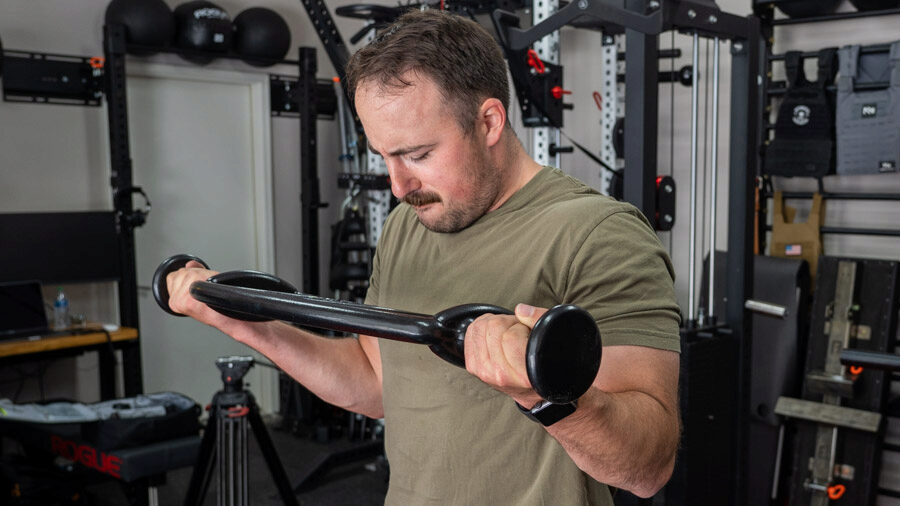
Workout Mistake 3: Ignoring Form and Technique
Elite-level weightlifters and powerlifters know that mobility, flexibility, and stability are just as important as strength, power, and stamina. Below are a few common technique-related workout mistakes and how to fix them.
Sacrificing Form for Volume or Weight
Form first, always. Yes, even if it means you have to lighten the load. As all fitness pros know, it’s common to see people (beginners and veterans alike) let their ego get the best of them. I can’t say this doesn’t happen to me.
But, there’s a difference between lifting heavier because you think you have a solid shot at a successful lift, and lifting heavier because Chad over there has more weight on his bar.
If your form is suffering and there’s no real benefit to pushing through (i.e., you’re not in a competition or training for one), scale back and stay safe.
Avoiding Tempo Work
Slow and steady wins the race, Amanda reminds me. Seriously, stop flying through reps like you’re about to take off to outer space. Research shows that slowing down your lifts, especially in the eccentric phase (the lowering or lengthening phase), can increase muscle-growth adaptations and increase strength.
Write tempos for your workouts to help with pacing. In weight training, tempo refers to the speed at which you lift the weight. For instance, add a three-second descent to your squats or a two-second pause at the top of your deadlifts.
Lacking Core Engagement
Brace your core! Tighten your stomach! Navel to the spine! You’ve definitely heard at least one of these cues if you’ve ever attended a group lifting session or CrossFit-style class. But why? And more importantly, how?!
“Bracing or engaging your core is the act of positioning and tightening your abdominal and back muscles in a way that protects your spine while lifting,” Amanda says. “It prevents you from overextending your lower back and risking joint damage”.
In short, it’s important and you should know how to do it. (If nothing else convinces you, how about the fact that engaging your core can help you lift more weight?)
Here’s how to do it, according to Amanda:
“Imagine that you’re bracing yourself for a fist to the stomach. What’s your natural instinct? I hope it’s to take a deep breath and tighten your abdominal muscles. Once you establish that solidness, picture yourself “zipping up” your abs—draw your navel up and slightly inward to become a straight, stable cylinder.”
You should brace your core before every lift and maintain core stability throughout all of your sets.
Ignoring Mobility Limitations
Limited mobility affects lifters of all experience levels, particularly in the ankle, hip, and shoulder joints. And despite mobility limitations, people sometimes force themselves into positions with heavyweights and risk getting injured.
According to Amanda, there are two ways to go about this: You can work on improving your mobility and practice movements with lighter weights, or you can perform a modified version of the movement you’re struggling with (you may still have to decrease the weight).
Amanda offers a few common modifications for the big lifts:
- Box squats (squat to a box or weight bench) as you work toward full-depth squats
- Single-arm dumbbell shoulder press instead of barbell overhead press as you work on improving overhead mobility
- Trap bar deadlifts as you work on establishing strong deadlift positioning
The longer you ignore your mobility limitations, the harder it will be to come back from that when you finally decide to give technique the attention it deserves.
Holding Your Breath While Lifting
Unless you want to topple over, you should probably remember to breathe during lifting sessions. This mistake is common among beginners, Amanda says, and it often happens because they get so focused on the task at hand that they simply forget to breathe.
But ya gotta breathe! Not only do you need to breathe to avoid feeling lightheaded or dizzy, but breathing also gives you a chance to re-establish core engagement at the beginning of each rep. For the major compound lifts, Amanda recommends this breathing pattern:
- Deep inhale at the start of the rep
- Hold for the eccentric (lowering phase)
- Exhale during the concentric (shortening phase)
During full-depth squats, that would look like:
- Deep inhale in the standing position before you descend.
- Engage the core and hold the breath until you reach the bottom of the squat
- Drive through your heels and exhale to lift yourself out of the hole
- Repeat

Workout Mistake 4: Neglecting Muscle Groups
Whether your goals focus on physique, strength, or something else entirely, you’ll need a well-rounded approach to reach those goals. Avoid these lifting mistakes, as they can set you back even farther.
Only Doing Isolation Exercises
Isolation exercises, which work one muscle or muscle group at a time, have their place. But they definitely shouldn’t make up the bulk of your lifting routine—not, at least, if you want to get stronger, Amanda says. Compound movements (exercises where two or more joints move) are the way to go, and that’s something I’ve learned in my own training.
The more time you spend on squats, lunges, deadlifts, overhead presses, rows, and other multi-joint movements, the more you can develop your body.
“Isolation exercises are great for increasing muscle mass in very specific areas or addressing muscle imbalances,” Amanda points out, “but the majority of people should be spending most of their time on compound lifts.”
Always Working the Same Muscles
As much as you don’t like to squat or bench press or whatever your kryptonite is, you gotta do it.
“This common pitfall of avoiding certain muscle groups or movements can lead to serious problems over time, especially if you overwork and underwork two opposing muscle groups,” Amanda says.
One example of this is quad dominance which is basically just an imbalance between your quads and hamstrings and glutes. Some people spend so much time doing squats and lunges, but they don’t incorporate deadlifts, hip thrusts, or other exercises that target the hamstrings and glutes. Then they end up with tight hip flexors and wonder why their back hurts all the time.
Avoiding Weak Areas
You can’t skirt your trouble areas forever. Everyone enjoys performing the lifts they’re good at. It feels good to feel strong. However, you’ll only wind up weaker in the long run if you avoid training muscles that already aren’t up to par with the rest of your body. Whatever muscle group or movement you’re avoiding, start tackling it now. You’ll thank yourself later.

Workout Mistake 5: Lifting Without Focus
Excelling at lifting weights is a mental game as much as it is a physical one. Below, learn how to stay focused and make the most of your time in the gym.
Not Pushing Yourself
It’s 100 percent fine to take it easy at the gym sometimes. In fact, it’s encouraged. Not every day has to be an all-out sweat sesh. But, if you go laissez-faire too often, you won’t make any progress.
Solve this by establishing some structure. Set goals for your individual workouts so you have something to work toward every time you hit the weights.
Pushing Yourself Too Far
On the other side of the coin, pushing yourself too far can cause just as many problems (if not more). While we touched on overtraining syndrome above, it’s also important to understand the effects of training too hard in the short term.
“Some people just get really excited about a certain type of workout or get pumped up to lift heavy, and many let that excitement cloud their judgement,” Amanda says. “Overdoing a workout in any sense—pushing the weight too high, reducing rest intervals, adding an additional set—can result in extreme soreness if you’re not ready for that progression.”
That kind of soreness can sideline you for days, so don’t let excitement or ego get in the way of smart programming.
Resting Too Long Between Sets
Hey, put your phone down and get back to the barbell. We’re all guilty of getting distracted time and again, but if you find yourself resting too long between sets every workout, you may need to employ a tactic to keep yourself on track.
I’ve found that planning the rest intervals for each exercise in my workout, and then setting a timer with the intervals, helps me move more efficiently through my workouts.
Failing to Set a Stimulus
Amanda tells me there’s one easy way to avoid all three of the above mistakes: Set a stimulus and stick to it. In plain language, a workout stimulus is the way in which the exercise is going to produce the response you want your body to have. If you want a certain outcome, your workout needs to have the correct stimulus.
For example, if your intended outcome or response is to increase muscle mass, you’d plan for a stimulus to trigger that.
In this case, Amanda notes that means doing sets of eight to 15 reps with 30 to 90 seconds of rest (the best rep range for hypertrophy, or muscle growth).
Think of stimuli as smaller goals for your individual training sessions. Without an intended stimulus, you might end up stumbling through your workouts, not really sure how many reps to lift or how long to rest.
Coop’s Takeaway
As you can see, there are a lot of potential mistakes you can make when lifting weights, especially if you work out in a garage gym and don’t have the luxury of coaching or personal training.
Luckily, most of these common workout mistakes have simple fixes—note I said simple, not easy. You’ll have to put it into course-correct. Whether you’re a beginner or an advanced lifter, focusing on the fundamentals can set you up for a lifetime of continual improvement in the gym.
References
1. Park HK, Jung MK, Park E, et al. The effect of warm-ups with stretching on the isokinetic moments of collegiate men. J Exerc Rehabil. 2018;14(1):78-82. Published 2018 Feb 26. doi:10.12965/jer.1835210.605
2. Kreher JB, Schwartz JB. Overtraining syndrome: a practical guide. Sports Health. 2012;4(2):128-138. doi:10.1177/1941738111434406
3. Phillips SM, Van Loon LJ. Dietary protein for athletes: from requirements to optimum adaptation. J Sports Sci. 2011;29 Suppl 1:S29-S38. doi:10.1080/02640414.2011.619204
4. Burd NA, Andrews RJ, West DW, et al. Muscle time under tension during resistance exercise stimulates differential muscle protein sub-fractional synthetic responses in men. J Physiol. 2012;590(2):351-362. doi:10.1113/jphysiol.2011.221200
5. Wilk M, Golas A, Krzysztofik M, Nawrocka M, Zajac A. The Effects of Eccentric Cadence on Power and Velocity of the Bar during the Concentric Phase of the Bench Press Movement. J Sports Sci Med. 2019;18(2):191-197. Published 2019 Jun 1.
6. Huxel Bliven KC, Anderson BE. Core stability training for injury prevention. Sports Health. 2013;5(6):514-22. doi:10.1177/1941738113481200
7. Krzysztofik M, Wilk M, Wojdała G, Gołaś A. Maximizing Muscle Hypertrophy: A Systematic Review of Advanced Resistance Training Techniques and Methods. Int J Environ Res Public Health. 2019;16(24):4897. Published 2019 Dec 4. doi:10.3390/ijerph16244897
8. Kraemer WJ, Ratamess NA. Fundamentals of resistance training: progression and exercise prescription. Med Sci Sports Exerc. 2004;36(4):674-688. doi:10.1249/01.mss.0000121945.36635.61


